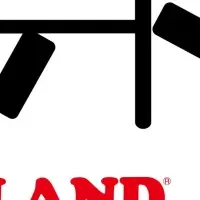
IAB and MRC Unveil Comprehensive Attention Measurement Guidelines for Effective Public Feedback
New Standards in Attention Measurement
On May 12, 2025, the Interactive Advertising Bureau (IAB) and the Media Rating Council (MRC) released a set of Attention Measurement Guidelines, inviting industry professionals to provide public feedback for 60 days until July 12, 2025. This initiative aims to set a standardized approach to measuring and reporting attention metrics across various media formats. The guidelines were developed by the IAB Attention Task Force, which comprises over 200 members from diverse sectors in advertising, media, and measurement.
The Importance of Standardization
In a landscape where attention measurement can resemble a chaotic free-for-all, establishing shared standards is crucial. Angelina Eng, VP of Measurement at IAB, emphasized that the absence of a common approach has led to confusion, making it difficult for stakeholders to compare results and build trust. The new guidelines aim to bring consistency to this varied field, thereby enhancing the credibility and utility of attention metrics.
The guidelines encompass four main methodologies for measuring attention: data signals, visual tracking, physiological and neurological observations, and panel or survey-based inputs. By setting common requirements, these guidelines intend to minimize the reliance on proprietary and inconsistent methods, fostering a unified baseline for attention measurement that all stakeholders in the ecosystem can utilize.
Key Features of the Guidelines
The framework outlined in the Attention Measurement Guidelines is designed not just to demonstrate what attention is, but also to provide robust methods for its measurement. This ensures quality and consistency while allowing for transparency through reporting and disclosures. Ron Pinelli, Senior Vice President at MRC, pointed out that meaningful measurement must be validated and ready for scrutiny in real-world applications, thus reinforcing the need for accepted, rigorous requirements within the industry.
The guidelines advocate for viewing attention as a complementary signal rather than a replacement for traditional delivery or outcome metrics. This supports organizations in evolving their understanding of user engagement and exposure, leading to more informed decision-making processes. With standardized methodologies, stakeholders can better align their attention metrics with business outcomes, enhancing clarity in marketing strategies.
Inviting Industry Feedback
Eng expressed the necessity for industry professionals to engage actively with the guidelines during the public comment period, stating, “This is about creating the conditions for trust—and ultimately, investment—in attention as a reliable indicator of exposure and engagement.”
Stakeholders, including brands, publishers, agencies, and measurement providers, are urged to review the draft guidelines thoroughly and submit their feedback on the official IAB website. A final version of the guidelines is expected to be published by the end of 2025, establishing a solid framework for MRC accreditation audits in the future.
About IAB and MRC
The IAB empowers media and marketing industries to excel in the digital economy, representing over 700 members encompassing major media companies, brands, and agencies. Its initiatives include critical research and education on the significance of digital marketing. Meanwhile, MRC, founded in 1963 as a non-profit industry association, is dedicated to ensuring that measurement services used in media are valid, reliable, and effective. MRC’s mission includes developing measurement standards rooted in industry-wide consensus, helping to enhance the quality of research available in the marketplace.
By defining attention parameters and measurement methodologies, the IAB and MRC are paving the way for a more accountable and transparent advertising landscape, ensuring that all parties involved have a clear understanding of how attention is quantified moving forward.
Topics Entertainment & Media)










【About Using Articles】
You can freely use the title and article content by linking to the page where the article is posted.
※ Images cannot be used.
【About Links】
Links are free to use.